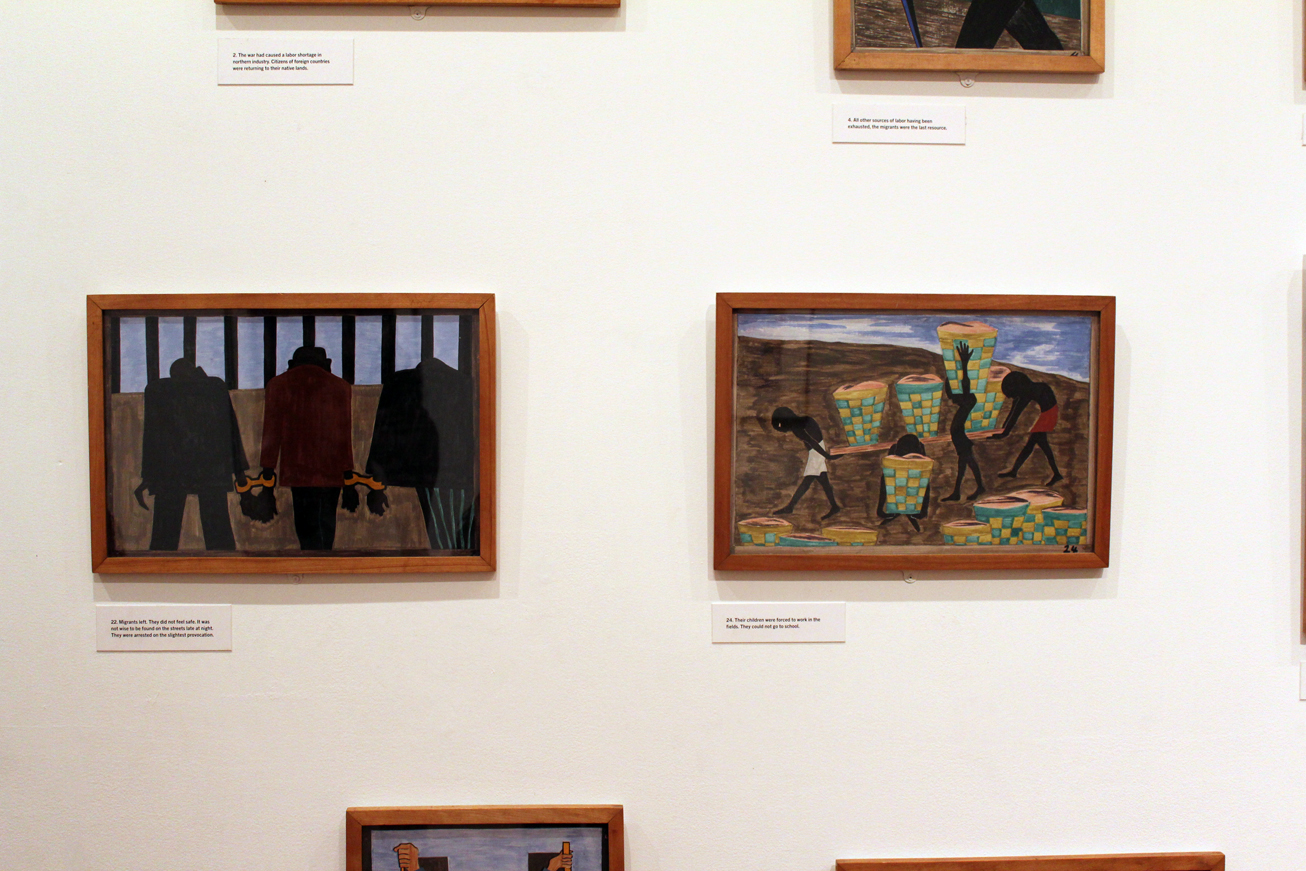NEW YORK—When “The Migration Series” debuted in 1941 at the Downtown Gallery in Manhattan, Jacob Lawrence (1917-2000) became the first black artist represented by a New York gallery. The young artist was only 24 years old.
Lawrence’s renowned collection of 60 paintings depicts the Great Migration of about 1.6 million African Americans who in search of better opportunities for their families journeyed from rural southern states to northern and midwestern industrial states between World War I and World War II.
The series is held in the collection of Museum of Modern Art, which retains the evened-numbered works shown here, and The Phillips Collection in Washington, D.C. which owns the odd-numbered tempura on hardboard panels.
The Phillips Collection describes the artist’s approach to the migration series thus: “Before he began painting, Lawrence spent months researching the subject and distilling it into short captions and preparatory drawings. Then, with the help of his wife, the artist Gwendolyn Knight, he prepared 60 boards for the paintings. He created the paintings in tempera, a type of water-base paint that dries rapidly. To keep the colors consistent, he applied one hue at a time to every painting where it was to appear, a feat of organization that required him to plan all 60 paintings in detail.”
Thirty panels of “The Migration Series” are on view in the Frances and John L. Loeb Gallery on the fourth floor of MoMA.
All photos © Arts Observer

From left, Panel 22: “Migrants left. They did not feel safe. It was not wise to be found on the streets late at night. They were arrested on the slightest provocation.” and Panel 24: “Their children were forced to work in the fields. They could not go to school.”

Detail of Panel 26: “And people all over the South continued to discuss this great movement.”

The collection at MoMA includes the 30 even-numbered panels of “The Migration Series” shown here. The odd-numbered panels are at The Phillips Collection in Washington, D.C.

All 60 works in “The Migration Series” were created in 1940-41 in tempera on hardboard.

Panel 58: “In the North the African American had more educational opportunities.”

